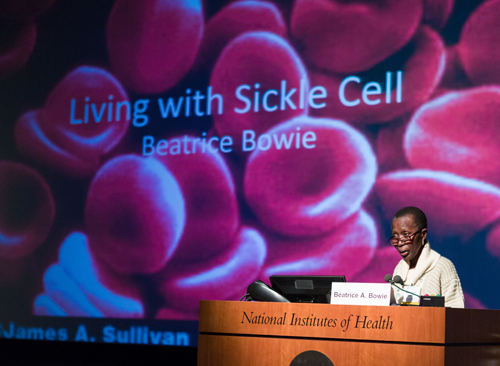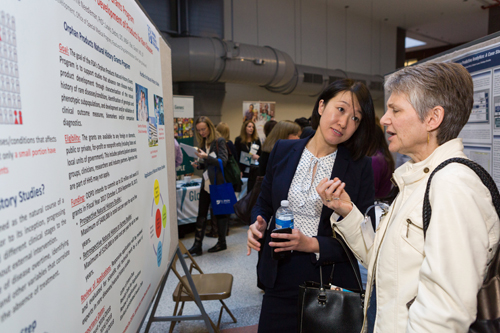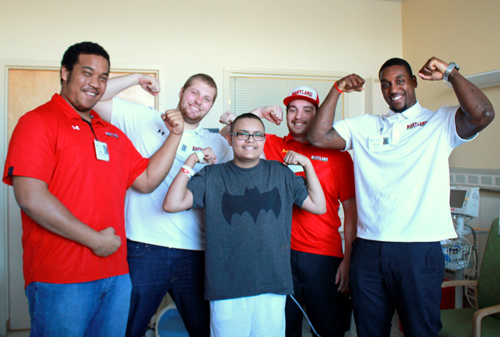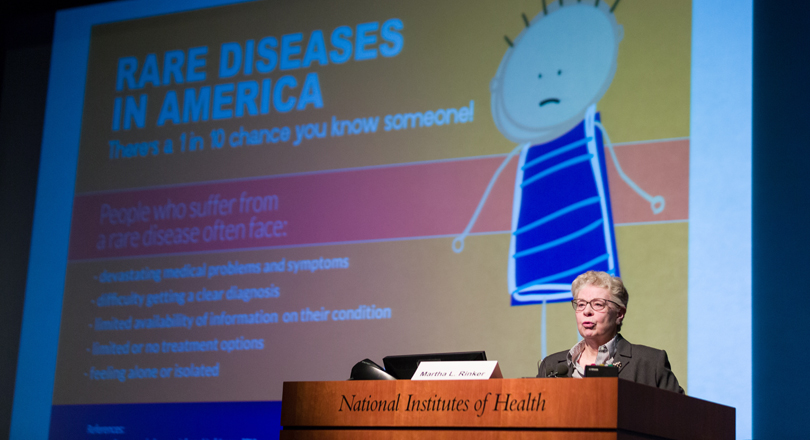Rare Disease Day features patients' voices, international collaboration



On Feb. 29, Leap Day, the Clinical Center and the NIH National Center for Advancing Translational Sciences (NCATS) hosted the 2016 Rare Disease Day at NIH. The event, which took place worldwide on Feb. 29, is aimed at educating policymakers and the public about rare diseases and their impact on patients' lives.
The event drew more than 500 attendees, a record high. Among the distinguished speakers were the co-chairs of the Rare Disease Congressional Caucus. Senator Orrin Hatch (R-UT) spoke via video, and Senator Amy Klobuchar (D-MN) and Representatives Joseph Crowley (D-NY) and Leonard Lance (R-NJ) each spoke in person about their work for legislation that will improve the lives of people with rare diseases.
The event initiated a mutually beneficial dialogue among public and private researchers, patients, patient advocates and policymakers; offered a venue to exchange the latest rare diseases information with stakeholders to advance research and therapeutic efforts; and put a face on rare diseases by sharing stories of patients, their families and their communities.
More than 6,500 rare diseases affect people around the world, of which only a few hundred have any treatment. Each rare disease affects fewer than 200,000 Americans. But, these illnesses affect an estimated 25 million people in the U.S. Less than 5 percent of rare diseases have a treatment. One such rare disease is the Ebola virus disease, which caused a severe epidemic in West Africa.
"With mortality exceeding 11,000 deaths, numbers that tragically eclipse all prior outbreaks combined, the 2014-15 Ebola crisis in West Africa proved how previously rare infectious diseases can flare without warning in new and unexpected ways and command the world's attention," said Dr. Richard T. Davey, Jr., deputy clinical director of National Institute of Allergy and Infectious Diseases.
Other rare diseases are studied with the help of the Undiagnosed Diseases Network (UDN), a research study funded by the NIH that brings together clinical and research experts from across the U.S. to solve the most challenging medical mysteries using advanced technologies.
"Millions of Americans who deal daily with rare disorders and thousands of physicians and scientists have dedicated their lives toward improving the lives of these individuals," said Dr. William Gahl, director of the UDN. "On Rare Disease Day, we remember all of these people and thank them for the inspiration they provide us and for their contributions to the future of medicine."
Beatrice Bowie, a NIH patient who has a rare inherited blood disorder called Sickle Cell Disease, also addressed attendees of Rare Disease Day.
"It has been a roller-coaster ride for those of us afflicted with sickle cell disease, whose lives are hanging in the balance. Fortunately, today there is much more widely disseminated knowledge of sickle cell disease, thanks to the efforts of researchers and care providers here at NIH and elsewhere," she said. "Sickle cell disease is now more commonly recognized, properly diagnosed and treated than before. But due to the mysterious nature of sickle cell disease, there is still so much to be learned to help us, the patients, and to finally find a universal cure for this disease."
The day also included a visit from Uplifting Athletes, a national nonprofit organization aligning college football with rare diseases and raising them as a national priority through outreach, research, education, and advocacy. Athletes from the University of Maryland visited pediatric patients.
